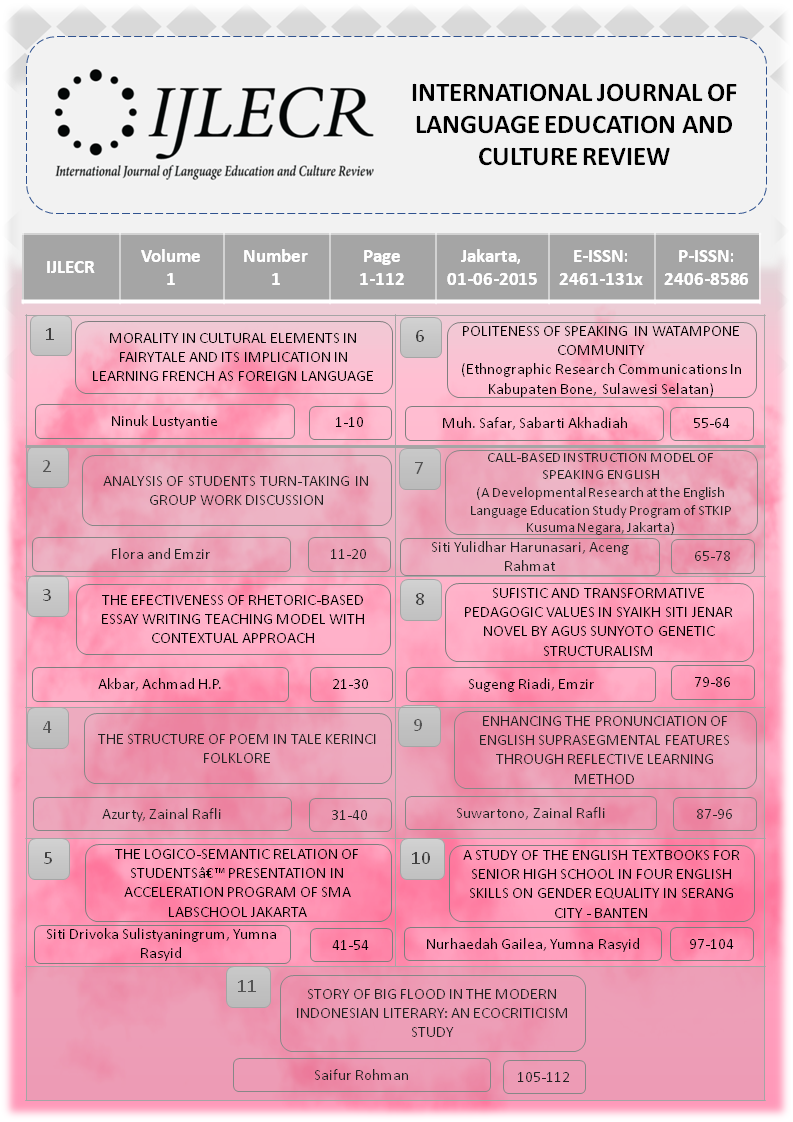CALL-BASED INSTRUCTION MODEL OF SPEAKING ENGLISH (A Developmental Research at the English Language Education Study Program of STKIP Kusuma Negara, Jakarta)
DOI:
https://doi.org/10.21009/IJLECR.011.07Kata Kunci:
instruction model, English speaking skill, Computer Assisted Language Learning/CALLAbstrak
The objective of this research is to develop a model of learning speaking English for students majoring in English Language Education in STKIP Kusuma Jakarta, and to examine the effectiveness of CALL-Based instruction the model in improving students’ speaking skill. The research was conducted using system approach model of Dick and Carey, and was carried out from October 2012 to July 2014 in 3 stages i.e. preliminary stage; model development stage; validation, evaluation, and revision stage. The data were obtained through tests, questionnaires, interviews, observation, and expert judgments. The English speaking test was designed to measure students speaking skill before and after the implementation of the model. Then, the data were analyzed qualitatively and quantitatively. The research findings showed that the development of the model can improve the students’ speaking skill through the increase in the mean score before the implementation of the model, 61 to 69 after implementation of the model. The testing of hypothesis using paired-samples t-test resulted in a probability value (sig) 0.000 < α = 0.05 which means that there is a significant difference on students speaking skill before and after implementing the CALL-based instruction model. It can be concluded that the model is effective in improving the students speaking skill in English Education Study Program of STKIP Kusuma Negara Jakarta.








